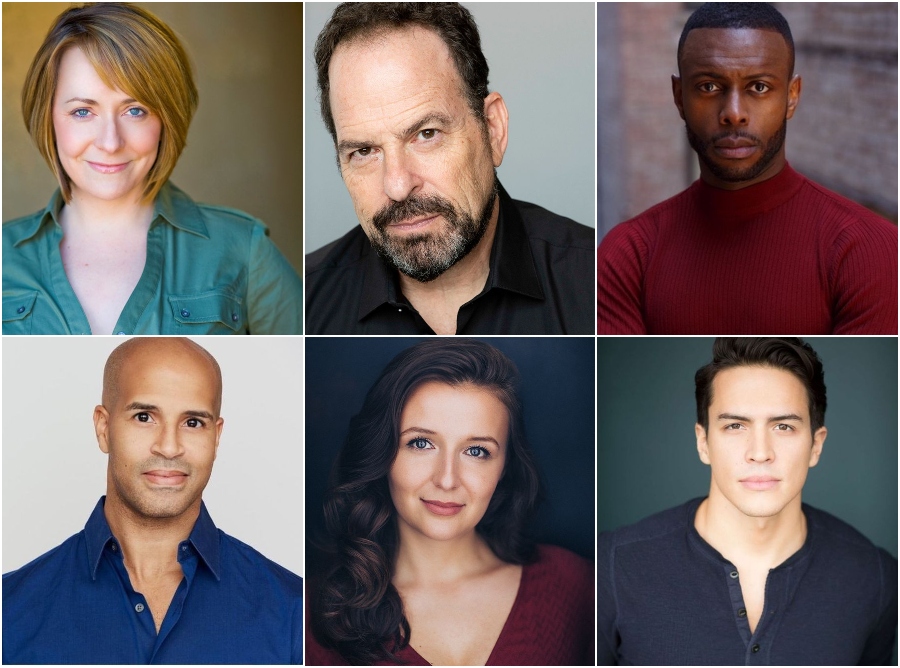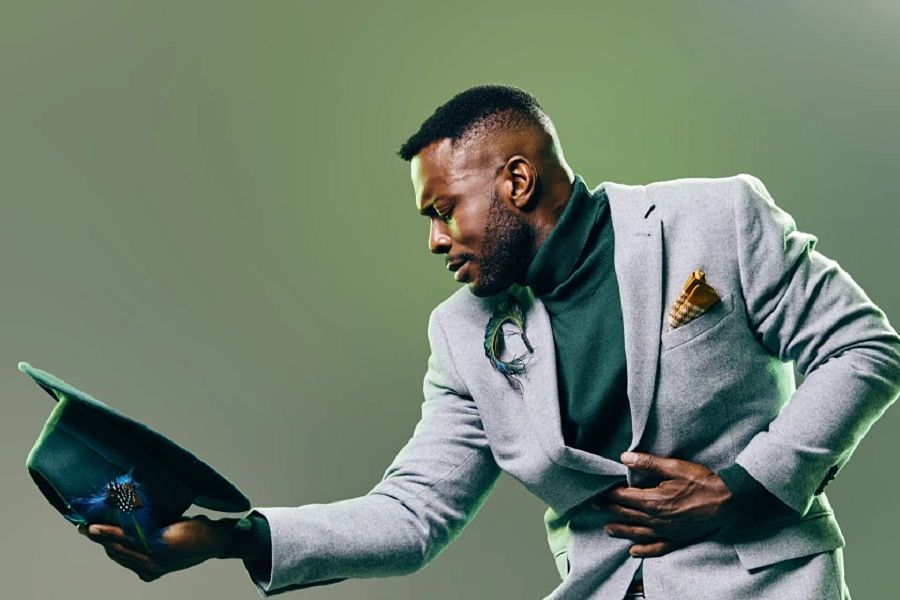This is one in a series of stories marking the two-year anniversary of the COVID-19 shutdown. The full package is here.
When many theatres began to reopen in the summer and fall of 2021, it seemed that the worst of the pandemic was over, at least for the theatre industry. But just in time for the holidays, Omicron hit, causing breakthrough cases at dozens of shows on and Off-Broadway and around the country. Photos proliferated on social media showing understudy announcement boards in theatre lobbies, and stories circulated widely about shows that had to resort to flying in people who hadn’t done the show in years. Behind all these feel-good posts were the hard-working understudies, standbys, and swings whose jobs are always difficult, but were made even more so in these crazy circumstances.
Josh Breckenridge (he/him), dance captain and standby for five of the six male tracks in Come From Away on Broadway, broke down the terminology for me: “A standby is offstage and covers leads. A swing is like a standby in that they’re offstage as well, but they cover multiple ensemble roles, and an understudy is somebody who has their own track onstage, whether it’s a supporting, lead, or ensemble, and also covers someone within the show.”
One of the many challenges for covers is that they generally don’t get rehearsal time until after opening, but they still have to be ready to go on at a moment’s notice. “In all of the experiences that I’ve had, for those that were prepared for the swings to go on in previews or at the beginning, those were when the swings didn’t go on quickly at all,” said Jody Reynard (he/him), who has been a swing on four Broadway shows, including Summer, Taboo, and Legally Blonde, as well as four national tours, including Kiss Me, Kate, Memphis, and Chicago. “For the ones that completely didn’t prepare for the swings, didn’t have costumes for them, we were inevitably on in previews.”
In the age of COVID, it has been even more likely that somebody will have to go on before opening. Jacob Dickey (he/him) is in the Company ensemble as a New Yorker and understudies Andy, Theo, and Paul, so he was focused on learning his ensemble track during rehearsals. But he really had to learn everything before the official opening night on December 9 as Omicron was creeping up.
Everybody has their own approach in learning all the parts they cover, since a lot of it involves doing your own homework while watching the onstage actors, even as larger shows like Company do give understudies rehearsal time whenever they can. Breckenridge says that because there are so many accents in Come From Away, anchoring the accents to each character helps marry the roles to his brain. Happy McPartlin, another standby in Come From Away who covers five of the six female tracks, said she creates a movie of each person she covers in her brain. Lee Harrington, who covered all the female roles in Classic Stage Company’s Off-Broadway revival of Assassins, said she would take walks around the city and run the show as each character. Reynard, who has covered as many as nine tracks in a single show (in Legally Blonde and Kiss Me, Kate) likes to learn the track with the most choreography first, and then make modifications from there for the other tracks.

Ideally, a cover will have also had a put-in rehearsal before going on for the first time. Put-ins are when actors have the chance to perform the role in costume with the whole cast. Sometimes you make do with a mini put-in, as Dickey had a few hours before he went on as Theo in Company. The first time Harrington went on for Emma Goldman in Assassins, it was because the actor who normally played the role had tested positive for COVID. They started to have a put-in rehearsal, but that was cut short when Harrington herself got a positive result. Then, after two negative PCRs, it was found to be a false positive, and they resumed her put-in at about 6 p.m. before the 8 p.m. show, where Harrington did go on. “I had lost my nerves that day because I was just so exhausted. Because most of my adrenaline was spent with my COVID tests,” she said. Later in the run she went on as Sara Jane Moore, and when her put-in was running long, lead actor Steven Pasquale suggested finishing the scenes in the dressing room as she got ready. “It feels like real guerilla theatre doing theatre in COVID,” Harrington said. “It’s really collaborative. Everybody gets in there and helps and you do what you can.”
After that crazy first day, Harrington went on for about nine shows while Horn was out. While they worry about the health of the castmates who have to be out, covers do find it rewarding to get to have a long run like that. Dickey did a ten-day stint as Andy in Company when Claybourne Elder was out with COVID. “Being able to go on multiple times, you learn something new every time you go on,” Dickey says. “It’s just learning the little choreography things that you’re constantly thinking about, once you get those in your body, allowing yourself to just live in the character. Because it’s so difficult if you’re not doing it every night. You’re not in the flow of the show every night.”
Loren Lester (he/him), a standby for four roles in the national tour of The Band’s Visit, had a similar experience. The tour has been pretty lucky to have no outbreaks among the cast, but after a holiday break hiatus, the lead didn’t get his test results in time, so Lester went on as Tewfiq four times in a row while that was sorted. “I felt like I could really build some momentum with that character. Because usually it’s spotty—one time in this city and then two months off and then one time in that city,” he said. It also meant that he was the one reviewed by Portland critics. This is proof of a positive change Harrington has noticed in the industry: When a cover goes on, people are more likely to accept that the person is genuinely in that role and not just filling in.
There have been other subtle shifts in mentality, especially after Charlotte St. Martin, president of the Broadway League, made hurtful comments about understudies not being as effective as leads—something every cover has heard before but which couldn’t be further from the truth. “Our job is to uphold the quality of the show, the quality of the scene, the quality of these characters, and so we have to be able to not only that, but do that for multiple characters,” said Dickey. At last more people are recognizing how much talent it takes to do that. Breckenridge said that now, instead of hearing sighs of disappointment when an understudy’s name is announced, audiences are excited, rustling their programs to read the inserted bios of who is on. Above all they’re grateful for the show going on at all and not being canceled.
Of course, sometimes not even understudies, swings, or standbys can save a show from COVID, no matter how prepared they are. Assassins still had to close early because by then there were too many positive cases. Reynard, who was in Thoughts of a Colored Man out of town, was supposed to join the Broadway cast during an actor’s leave of absence. He was called two days after he started rehearsal to see if he could start his run early, but instead the show posted its closing notice that day. “Had it not been for the swing experience that I had, there’s no way I could have made that possible,” he said. “Because if I weren’t willing, the show probably would have posted notice much earlier in the day.”
Despite all the hardships and heartbreaks, most actors also say that getting to do theatre through this fraught time was special. “Getting to make art in a pandemic is such a privilege,” said Harrington. “I felt so lucky to be an understudy and I wouldn’t have changed any part of the experience.”
When Omicron was at its worst, almost every standby was on in Come From Away on Broadway. Then, when it hit the touring cast, McPartlin actually flew out to help them. There were representatives from the Australian, Toronto, original Broadway, current Broadway, West End, and tour casts that weekend. “It’s so terrible that this is happening, but it creates this magic,” she said. “These are people that I don’t even know, but we all just jumped in together and everybody was so helpful and welcoming and we made this magical thing that has never happened before and will never happen again.”
While audiences can’t predict when a swing will perform next, we can give them the credit and the applause they always deserve, even when we’re not in a pandemic.
Linda Buchwald (she/her/hers) is a theatre journalist based in New York City who has written for TheaterMania, Playbill, TDF Stages, Kveller, and more. You can follow her on Twitter @PataphysicalSci


